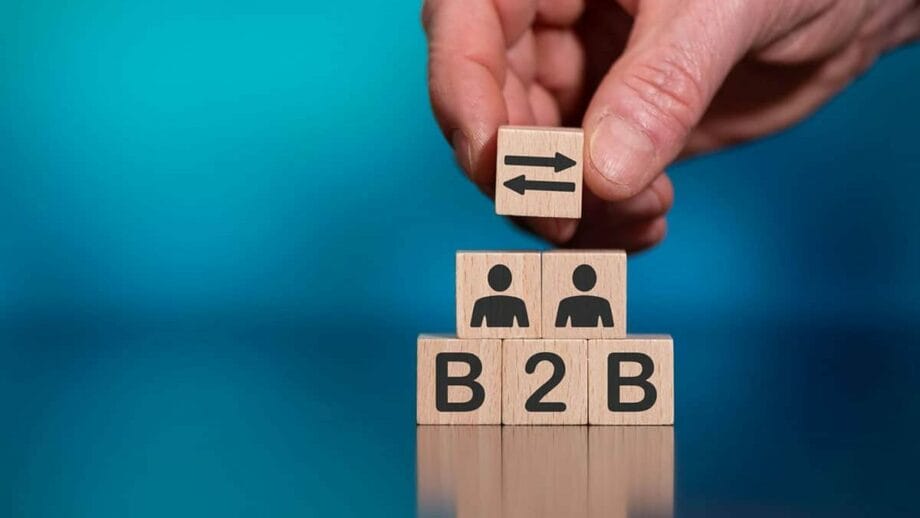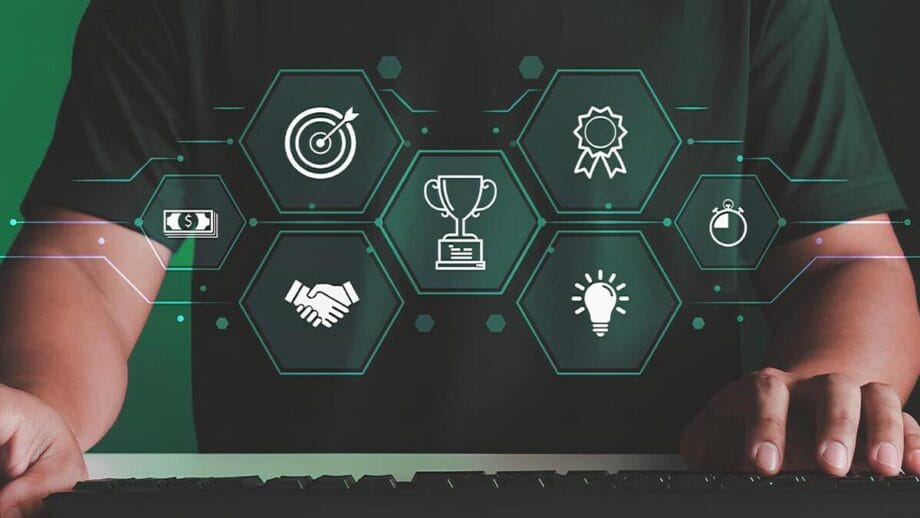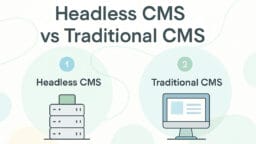Traditional loyalty programs often fail to engage distributors and resellers. While points, discounts, and occasional rewards may work on the surface, they typically fail to build lasting motivation or drive consistent participation.
Distributors are busy, often juggling multiple brands, and need more than just passive perks to stay invested. This is where gamification comes in. Once seen as a tool for consumer engagement, gamification is now gaining serious traction in the business-to-business (B2B) space, especially large-scale B2B loyalty programs targeting sales partners.
By including game elements like leaderboards, missions, badges, and progress tracking, brands can create dynamic experiences that motivate partners, build product knowledge, and boost performance all at scale.
What is Gamification in Enterprise Loyalty?

Gamification in business/enterprise loyalty refers to the use of game elements and mechanics like points, badges, levels, leaderboards, and challenges. This motivates customer engagement, rewards behavior, and builds long-term brand loyalty.
Why Gamification Works for Distributors and Resellers
Gamification isn’t just about making things fun; it taps into key psychological triggers that drive motivation and behavior. By using elements like competition, rewards, and recognition, gamification creates a more engaging and goal-driven experience for distributors and resellers.
The Psychology Behind Gamification
- Competition: Leaderboards and performance rankings tap into the natural desire to win and be the best. Competing with peers pushes individuals to stay active and aim higher.
- Rewards: Earning points, badges, or prizes gives users a clear sense of progress and achievement. These rewards create a positive feedback loop that encourages repeated behavior.
- Recognition: Public acknowledgment, like topping a leaderboard or earning a badge, builds self-esteem and encourages continued engagement.
Why Distributors and Resellers Respond Well
Distributors and resellers respond well to gamification because it taps into their natural desire for recognition, competition, and achievement, making work more rewarding and fun.
- Sales Motivation: Gamified systems reward sales-driving behaviors like upselling or hitting targets, which align perfectly with their goals.
- Performance Visibility: Clear metrics and dashboards show where they stand, what to improve, and how close they are to earning rewards.
- Peer Recognition: Being seen as a top performer builds reputation and confidence, especially in competitive sales environments.
- Tangible Incentives: Whether it’s gift cards, bonuses, or exclusive perks, real-world rewards keep them focused and eager to participate.
Key Benefits of Gamification for Engaging Distributors & Resellers
In B2B ecosystems, keeping distributors and resellers consistently motivated and aligned with brand goals can be challenging. Gamification offers an innovative solution by turning routine sales tasks, training, and performance goals into engaging, rewarding experiences. It leverages human psychology – reward, competition, and achievement – to create lasting engagement and stronger business relationships.
The following are key benefits of gamification in B2B loyalty programs:
- Boosts Participation and Engagement: Certain gamified elements, like points, badges, and rewards, make routine tasks like logging into a portal or submitting reports feel more rewarding. It encourages distributors and resellers to engage with the platform regularly, increasing interaction and program stickiness.
- Improves Product Knowledge and Training Completion: Gamification transforms dull training into interactive experiences with levels, progress bars, and quizzes. As a result, partners are more likely to complete product certifications, stay updated on new launches, and confidently sell their solutions.
- Encourages Healthy Competition: Leaderboards and challenges spark friendly competition between partners and teams. It not only motivates top performers to maintain their edge but also inspires others to push harder, driving better overall performance.
- Real-Time Performance Tracking and Feedback: Gamified dashboards provide instant visibility into goals, progress, and results. Distributors can track their sales metrics or training status in real time, receive feedback, and stay aligned with targets without waiting for monthly reports.
- Drives Sales and Brand Advocacy: Gamification boosts sales and brand loyalty by rewarding actions like upselling, cross-selling, or brand promotion. When partners feel engaged, they’re more likely to focus on your products, support your brand, and create strong customer relationships.
Core Gamification Elements for Enterprise Loyalty Programs

In today’s competitive market, loyalty programs are becoming more than just rewards and discounts. By adding fun, game-like features, businesses are making partner and customer engagement more exciting, interactive, and rewarding.
These game-like features tap into human psychology by rewarding progress, recognizing achievements, and encouraging friendly competition to drive ongoing participation and deeper loyalty.
Gamification elements tap into human psychology and create a sense of achievement, social interaction, and fun, thereby boosting customer loyalty and retention.
Below are core elements of gamification for enterprise loyalty programs and how they work:
- Points & Tiers: Points can be earned through various actions (purchases, referrals, social shares, etc.). When points accumulate, customers can unlock higher tiers (e.g., Silver, Bronze, Gold). Each tier offers better perks, motivating customers to climb the loyalty ladder. Different tiers develop a sense of progression and status, encouraging customers to achieve higher levels.
- Leaderboards: Leaderboards show how users rank based on things like sales or activity. This creates a fun, competitive environment where people try to improve their rank and get noticed. It keeps them active and motivated and encourages them to stay on top.
- Quests/Challenges: These are specific time-bound tasks or challenges that customers can complete to earn badges, points, or other types of rewards. They encourage active participation and provide clear goals for customers to pursue. These time-bound quests or challenges drive specific customer behavior. They make the whole customer experience more interactive and keep users coming back to achieve short-term goals and earn rewards.
- Badges & Certifications: Digital badges and certifications are visual symbols of expertise and achievement. They recognize achievements like completing onboarding, hitting sales milestones, or passing training modules. These symbols of expertise boost partner confidence and credibility in the marketplace. Rewarding badges for completing specific tasks or reaching milestones provides a sense of accomplishment and encourages continued customer engagement.
- Progress Bars: Progress bars visually track a participant’s journey and represent how close a customer is to achieving a goal or unlocking a reward. They are a clear visual indicator of progress and can be highly motivating, especially when close to completion. These progress indicators tap into the desire to “complete the circle,” motivating users to stay active and reach the finish line.
- Spin-to-Win or Instant Win Mechanics: Spin-to-win or instant-win mechanics offer immediate gratification and can be used to surprise and delight your customers. These mechanics can be implemented as a daily spin, a random reward for completing a challenge, or a chance to win a big prize, increasing the excitement and engagement with the loyalty program. By giving users a chance to win instant rewards through lucky spins or draws, you can create fun and spontaneity, driving frequent participation.
5 Strategies to Engage Distributors and Resellers at Scale
Engaging distributors and resellers across regions, teams, and performance levels can be challenging, especially as your network grows. Traditional loyalty programs often lose effectiveness when scaled up, leading to inconsistent participation, limited visibility, and reduced motivation.
To address this, enterprises are turning to smart, scalable engagement strategies, powered by gamification and technology. These strategies drive consistent performance and brand alignment across their partner ecosystems.
- Segmented Campaigns: Not all partners are the same; some are high-volume resellers, while others may be new or specialized. Segmenting loyalty campaigns based on partner type, region, or performance tier allows you to deliver personalized challenges, goals, and rewards. Addressing each partner’s unique motivation and business needs increases relevance and encourages participation.
- Mobile-Friendly Platforms: Today’s distributors and sales reps are always on the move. A mobile-first loyalty platform ensures they can check progress, complete challenges, redeem rewards, or receive updates – anytime, anywhere. It removes access barriers and encourages real-time interaction, especially in a field-driven sales environment.
- Automated Communication: Manually keeping thousands of partners informed is not scalable. Use automated emails, in-app notifications, and short message service (SMS) updates to provide timely reminders, reward updates, new challenges, and training invites. Automation keeps engagement consistent and ensures no opportunity for interaction is missed.
- Incentives Beyond Discounts: While price discounts are appreciated, they lose value over time. Offer diverse, experience-driven incentives like digital badges, tier upgrades, exclusive event invites, early access to products, or marketing support. These rewards provide emotional and professional value, building deeper loyalty than discounts alone.
- Integration with CRM and POS: Integrate your loyalty program with customer relationship management (CRM) and point-of-sale (POS) systems to track sales data, engagement, and performance automatically. This helps assign rewards accurately, trigger real-time feedback, and personalize campaigns based on live insights. It minimizes manual work and improves data accuracy across departments.
The Bottom Line

Gamification is transforming how enterprise brands engage with their distributors and resellers, making loyalty programs more interactive, rewarding, and result-driven. By tapping into game mechanics like points, challenges, and leaderboards, businesses can go beyond transactional rewards to build long-term motivation, loyalty, and performance across their partner networks. Loyalty program gamification isn’t just about the trend; it is a strategic advantage for scaling engagement and strengthening partner relationships.






